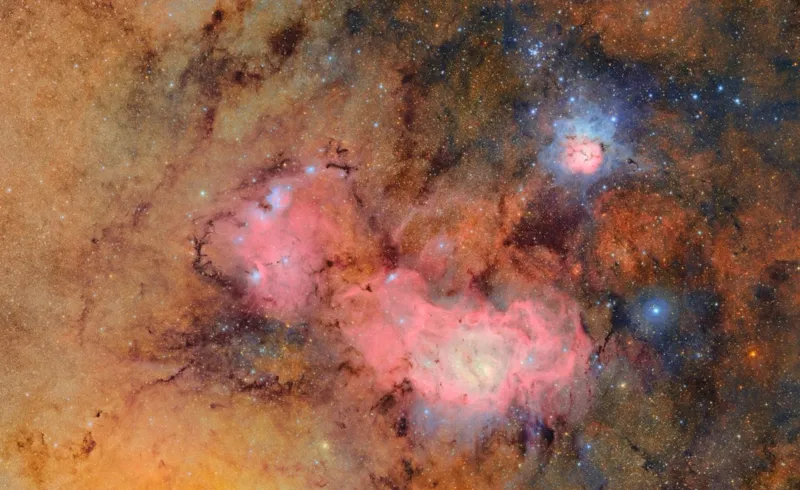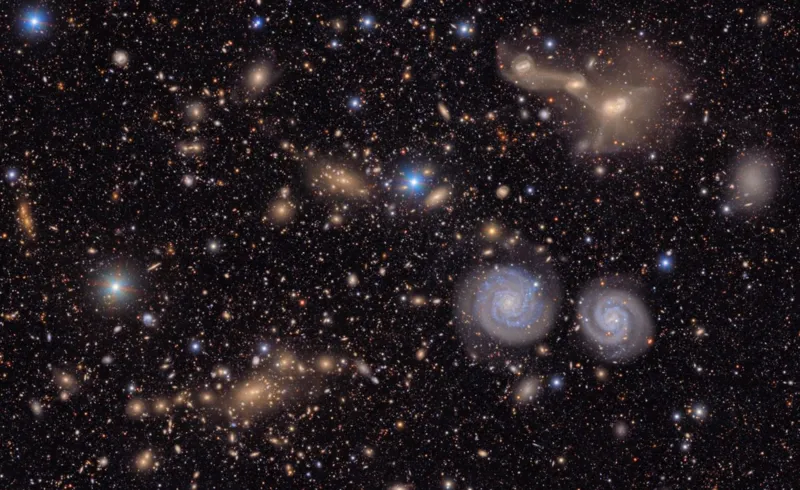The Vera C. Rubin Observatory, located in the Chilean Andes, released the first images on Monday, June 23, 2025, marking the beginning of a revolutionary era in observational astronomy.
The Vera Rubin Observatory, situated on Cerro Pachón mountain in central Chile, combines cutting-edge technology with one of the best stargazing locations on Earth. The site benefits from dry air, minimal pollution, and clear skies, all of which make it ideal for observing the stars. Observations made here are less likely to be disrupted by external environmental factors.
This project is a joint effort between the U.S. National Science Foundation and the Department of Energy, with construction costs reaching approximately $800 million.
The observatory is home to an 8.4-meter telescope paired with the world’s biggest digital camera that weighs 2.8 tons and measures roughly the size of a car.
This camera captures images at 3,200 megapixels, creating photographs so detailed that they could spot a golf ball on the Moon’s surface. For perspective, displaying one image would require 400 ultra-high-definition television screens.
The debut images revealed by the observatory showcase the ability of the instrument to capture the universe in exquisite detail.

This image combines 678 separate photographs taken over seven hours, revealing the Trifid and Lagoon nebulas in vivid detail. These star-forming regions, located thousands of light-years from Earth, appear as swirling clouds of pink and orange gas where new stars are born.

This image captures the Virgo Cluster, a massive collection of galaxies located about 55 million light-years away. The photograph shows bright spiral galaxies alongside countless distant galaxies, each containing billions of stars.
Apart from these stunning images, during just 10 hours of test observations, the observatory discovered 2,104 previously unknown asteroids within our solar system. Seven of these space rocks qualify as near-Earth asteroids, though none pose any threat to our planet.
This discovery rate far exceeds current capabilities. All other ground-based and space-based telescopes combined typically find about 20,000 new asteroids per year. The Rubin Observatory achieved more than 10 percent of that total in less than half a day of observations.
The telescope’s rapid scanning ability allows it to capture images every 40 seconds throughout the night. This constant monitoring creates a time-lapse movie of the changing sky, revealing objects that move, brighten, dim, or explode across the cosmos.
The observatory will spend the next 10 years conducting the Legacy Survey of Space and Time (LSST), photographing the entire southern sky every few nights. This massive undertaking will generate about 500 petabytes of data, which is far more than that produced by giant companies like Google, Netflix, or Amazon.
International partnerships will help analyze the massive data streams, with processing centers planned for France, the United Kingdom, and other locations.
Scientists expect this survey to catalog 20 billion galaxies while discovering millions of asteroids, comets, and other solar system objects.
Scientists believe the observatory might finally solve longstanding mysteries, including the possible existence of a ninth planet in our solar system’s outer reaches. If such a world exists, the telescope’s powerful camera should spot it within the first year of full operations. The observatory is set to begin its scientific observation of the southern sky on July 4, 2025, and the world is looking forward to seeing it working at its full potential.

